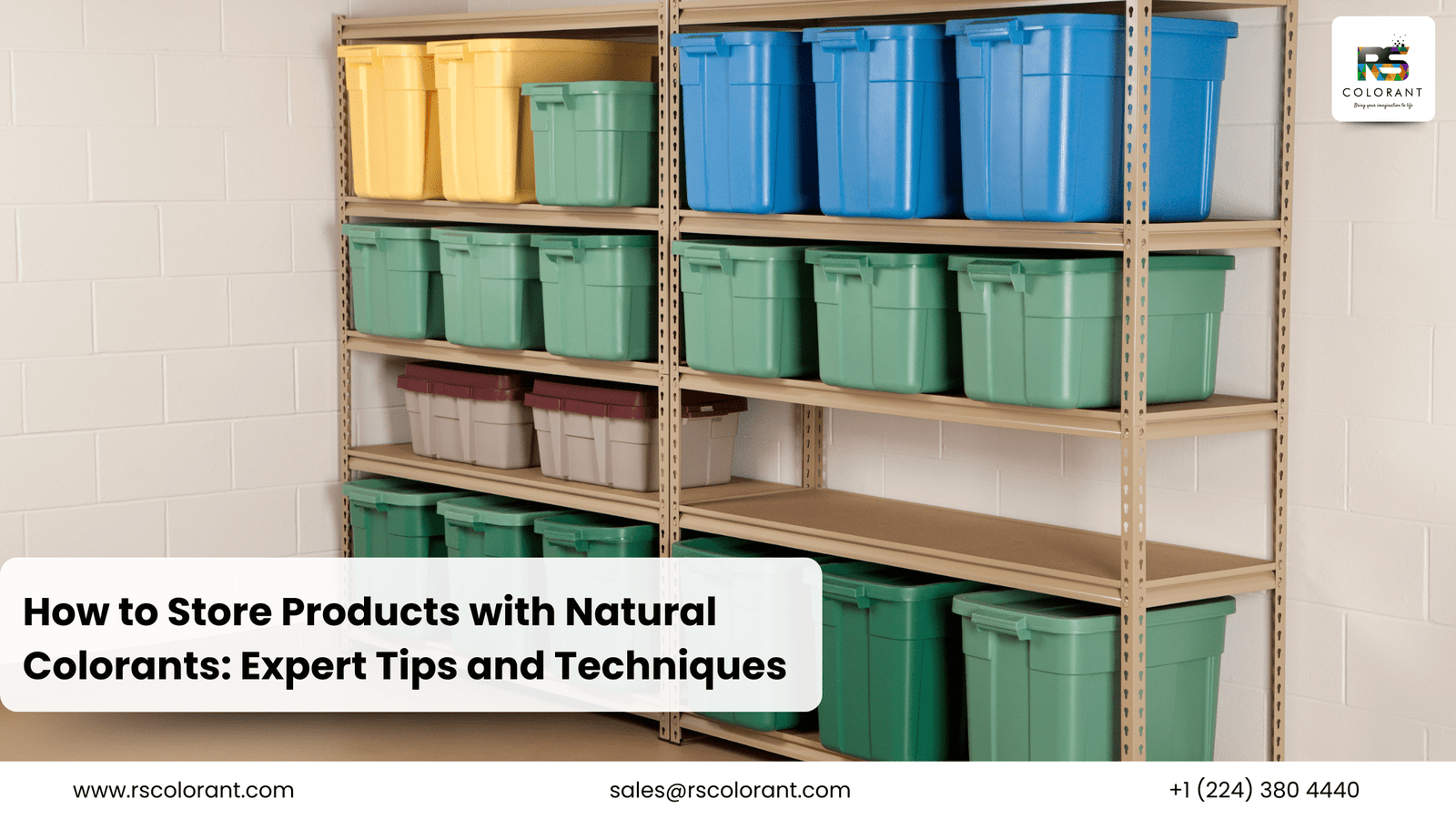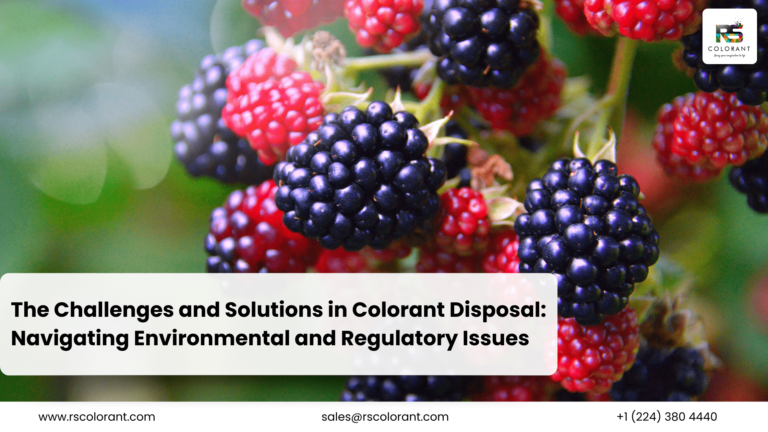Store Products with Natural Colorants – Introduction
Natural colorants are increasingly popular in various industries, from food and cosmetics to textiles and pharmaceuticals. Their appeal lies in their eco-friendliness and health benefits compared to synthetic alternatives. However, storing products with natural colorants can be tricky. Unlike synthetic dyes, natural colorants are sensitive to environmental factors and can degrade quickly if not stored properly. In this guide, we’ll dive into the best practices for storing products with natural colorants to ensure their longevity and effectiveness.
Understanding Natural Colorants
Definition and Types
Natural colorants are pigments derived from plant, animal, or mineral sources. They come in various forms, such as powders, liquids, and pastes, each requiring specific storage conditions to maintain their vibrancy and stability.
Benefits of Using Natural Colorants
Using natural colorants offers numerous advantages, including reduced environmental impact, lower toxicity, and added health benefits. They are often rich in vitamins, antioxidants, and other beneficial compounds.
Common Sources of Natural Colorants
Common sources include turmeric (yellow), beetroot (red), spirulina (blue-green), annatto (orange), and chlorophyll (green). These natural ingredients have been used for centuries in different cultures around the world.
Factors Affecting the Stability of Natural Colorants
Light Exposure
Exposure to light, especially UV rays, can cause natural colorants to fade. It’s essential to store them in opaque or dark-colored containers to block out light.
Temperature Variations
Extreme temperatures can accelerate the degradation of natural colorants. They should be stored in a cool, stable environment, away from direct heat sources.
Humidity Levels
High humidity can lead to clumping, mold growth, and other issues. Keeping natural colorants in a dry place is crucial to prevent moisture-related problems.
pH Levels
Some natural colorants are sensitive to pH changes. It’s important to store them in environments where the pH remains consistent to maintain their color integrity.
General Storage Guidelines
Proper Containers
Use airtight, non-reactive containers like glass or high-quality plastic to store natural colorants. This prevents contamination and moisture ingress.
Ideal Storage Conditions
Store natural colorants in a cool, dark place with consistent temperature and low humidity. Avoid areas with direct sunlight or significant temperature fluctuations.
Labeling and Documentation
Clearly label each container with the type of colorant, date of storage, and expiry date. This helps in maintaining an organized storage system and tracking the freshness of the colorants.
Storing Natural Colorants in Different Forms
Powdered Colorants
Storage Tips for Powdered Colorants
Powdered colorants should be kept in airtight containers to prevent moisture absorption. Desiccants can be added to the storage containers to absorb excess moisture.
Shelf Life of Powdered Colorants
Generally, powdered colorants have a longer shelf life compared to liquids, often lasting up to two years if stored correctly.
Liquid Colorants
Storage Tips for Liquid Colorants
Liquid colorants should be stored in tightly sealed bottles to prevent evaporation and contamination. Glass bottles are preferred for their non-reactive properties.
Shelf Life of Liquid Colorants
Liquid colorants have a shorter shelf life, typically around six months to a year. Refrigeration can help extend their usability.
Paste Colorants
Storage Tips for Paste Colorants
Pastes should be stored in airtight containers to prevent drying out. Regularly stirring the paste can help maintain its consistency.
Shelf Life of Paste Colorants
Paste colorants can last up to a year if stored properly, although they may start to separate over time and require mixing.
Storage Techniques for Specific Natural Colorants
Annatto
Storage Conditions for Annatto
Annatto should be stored in a cool, dark place in an airtight container. It is sensitive to light and heat, which can degrade its color.
Turmeric
Storage Conditions for Turmeric
Turmeric should be stored in airtight containers away from light and moisture. Keeping it in a dark cabinet or pantry is ideal.
Beetroot
Storage Conditions for Beetroot
Beetroot colorants should be refrigerated to extend their shelf life. Ensure they are in sealed containers to prevent odor absorption and moisture.
Carotenoids
Storage Conditions for Carotenoids
Carotenoids are sensitive to oxygen and light. Vacuum sealing and storing in dark, cool conditions can help maintain their stability.
Chlorophyll
Storage Conditions for Chlorophyll
Chlorophyll should be stored in a refrigerator in a tightly sealed container to prevent degradation from light and heat.
Preventing Contamination
Hygiene Practices
Always use clean utensils and wear gloves when handling natural colorants to avoid contamination. Ensure that storage areas are clean and sanitized.
Contamination Risks and Prevention
Contamination can come from various sources, including dust, microorganisms, and cross-contamination with other substances. Use dedicated storage and handling equipment for each type of colorant.
Extending Shelf Life
Use of Antioxidants
Adding natural antioxidants like vitamin E can help extend the shelf life of certain colorants by preventing oxidation.
Vacuum Sealing
Vacuum sealing removes air, significantly extending the shelf life of natural colorants by preventing oxidation and moisture ingress.
Refrigeration and Freezing
Some natural colorants can be refrigerated or even frozen to prolong their usability. Ensure they are in suitable containers to avoid freezer burn or condensation issues.
Common Mistakes to Avoid
Improper Storage Conditions
Storing natural colorants in unsuitable conditions, such as in direct sunlight or high humidity, can lead to rapid degradation.
Ignoring Expiry Dates
Using colorants past their expiry dates can result in poor performance and potential safety issues. Always monitor and adhere to expiration dates.
Mixing Different Types of Colorants
Mixing different types of natural colorants can lead to contamination and unwanted chemical reactions. Store each type separately to maintain their purity and effectiveness.
Conclusion
Storing products with natural colorants requires careful consideration of environmental factors and proper handling techniques. By following these guidelines, you can ensure the longevity and effectiveness of your natural colorants, maintaining the quality and appeal of your products. Remember, the key is to keep them cool, dry, and away from light, while also paying attention to hygiene and proper labeling.
FAQs
Can natural colorants be frozen?
Yes, many natural colorants can be frozen to extend their shelf life. Ensure they are in airtight, freezer-safe containers to prevent freezer burn and condensation issues.
How do you know if a natural colorant has gone bad?
Signs that a natural colorant has gone bad include changes in color, odor, and texture. If the colorant has an off smell, has clumped together, or has faded significantly, it’s best to discard it.
Are natural colorants safe for all types of products?
While natural colorants are generally safe, it’s essential to ensure they are suitable for your specific application, especially in food and cosmetic products. Always check for any potential allergens or reactions.
What is the best way to store homemade natural colorants?
Homemade natural colorants should be stored in airtight containers, away from light and moisture. Refrigeration can help extend their shelf life, especially for liquid and paste forms.
Can natural colorants lose their potency over time?
Yes, natural colorants can lose their potency over time due to factors like light exposure, temperature fluctuations, and oxidation. Proper storage can help maintain their vibrancy and effectiveness for a longer period.




